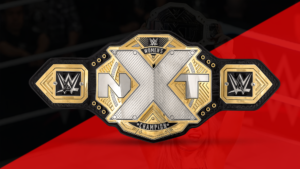
Why WWE Uses Multiple Championship Belts Instead of Just One
Why WWE Uses Multiple Championship Belts Instead of Just One
Professional wrestling and WWE have been fascinating fans for years with its fast paced action, colourful characters and intricate storytelling. One of the most iconic parts of professional wrestling is the championship belt, the ultimate prize in the industry. Unlike traditional sports leagues where there is usually one trophy or title to compete for, WWE has multiple championship belts, each with its own purpose and meaning.
This article will look at the reasons why WWE has multiple championship belts and not just one. From creative and business reasons to talent management and fan engagement WWE’s multi title approach serves many purposes that are vital to the company’s success.
1. Historical Significance and Legacy
WWE has a long history and multiple championship belts represent that history. Each title has its own lineage, meaning and prestige.
For example the WWE Championship which is often considered the company’s top title can be traced back to 1963. The Universal Championship introduced in 2016 represents a more modern era. These championships have been shaped by different generations of superstars so each belt is a piece of wrestling history. Consolidating all titles into one would erase those lineages and diminish the legacy of the past.
Also the Intercontinental Championship and United States Championship have historical roots in different wrestling promotions before becoming part of WWE. These mid card titles were created to push up and coming talent and are still important stepping stones in many superstars careers.
2. Representation of Different Divisions
WWE’s roster is made up of many talents across different divisions and multiple championships allows the company to acknowledge and showcase each of those divisions. For example:
- Men’s Division: WWE Championship, Universal Championship, Intercontinental Championship are for male talent at different levels.
- Women’s Division: Women’s Championship on Raw, SmackDown and NXT Women’s Championship are for female talent in their respective brands.
- Tag Teams: Raw and SmackDown Tag Team Championships are for tag team wrestling, a staple of WWE.
- Specialty Divisions: Championships like Cruiserweight Championship (retired) and 24/7 Championship were for niche wrestling styles or unique storytelling.
Multiple titles means every division and style of wrestling is recognised and celebrated. That appeals to a wider audience as fans have different tastes.
3. Brand Split and Exclusive Titles
One of the main reasons WWE has multiple belts is the brand split. WWE currently has three main brands: Raw, SmackDown and NXT. Each brand is a separate entity with its own roster, storylines and titles.
The brand split which was reinstated in 2016 was to create competition between Raw and SmackDown and to give WWE more creative freedom. By having unique titles for each brand (Raw Women’s Championship and SmackDown Women’s Championship) WWE ensures each show has its own stakes and identity. It also prevents overlapping storylines and makes it easier to manage the large roster of talent.
NXT, WWE’s developmental brand, adds to the complexity. Its titles like the NXT Championship and NXT Women’s Championship are to showcase emerging talent before they move to Raw or SmackDown. These titles are a proving ground for future main event talent.
Without multiple belts the brand split would lose its purpose and many wrestlers would have no titles to compete for.
4. Opportunities for Storytelling and Rivalries
Championships are one of the best storytelling tools in professional wrestling. They provide clear stakes for matches and opportunities for rivalries, alliances and dramatic turns. WWE’s multiple championship belts allows the creative team to tell many stories at once.
For example:
- One story might be a veteran champion defending against an up and coming challenger, the underdog story.
- Another might be former tag team partners vying for singles titles after their team broke up.
- Another might be inter-brand feuds during events like Survivor Series where champions from Raw, SmackDown and NXT face off against each other.
If WWE had only one belt the creative team would be limited in its storytelling options. Having multiple titles gives them more flexibility and depth so fans are always getting new stories.
5. Maximizing Talent Utilization
WWE has hundreds of talented wrestlers from veterans to up and comers. If there was only one belt the majority of the roster would have no realistic path to the top. Multiple titles means more opportunities for wrestlers to compete for meaningful titles, visibility and credibility.
For example mid-card titles like the Intercontinental Championship and United States Championship have been used to push wrestlers on the cusp of breaking into the main event scene. These titles give superstars a chance to develop their character, improve their in-ring skills and connect with the audience before moving on to bigger titles.
Tag team titles give teams that would otherwise have no relevance in a singles focused environment a spotlight. Women’s titles give female talent the recognition they deserve in a male dominated industry.
Without multiple titles, many wrestlers would be relegated to filler matches with little to no significance, potentially harming their careers and WWE’s overall product.
6. Big Events Prestige
WWE’s big events like WrestleMania, SummerSlam and Survivor Series are built around high stakes matches with title implications. Having multiple titles on the line adds to the drama and excitement of these events so fans get to see a lot of different matches.
For example WrestleMania has multiple championship matches from the WWE Championship to the Women’s Championship and beyond. This gives more guys a chance to shine on the biggest stage and fans get to see different matches that cater to different tastes.
Plus special events like Survivor Series are built around the concept of inter-brand competition with champions from Raw, SmackDown and NXT facing off against each other. Without multiple titles these events would lose a lot of their appeal and uniqueness.
7. Global and Marketability
WWE is a global brand with fans from all over the world. Having multiple championships allows WWE to cater to different markets and demographics. For example certain championships may be more popular in certain regions so WWE can market to those areas.
Championship belts are also merchandising gold. Replica titles are WWE’s top selling product and having multiple designs allows fans to choose their favorite. This generates revenue and strengthens the bond between fans and the WWE product.
8. Competition and Suspense
In a world where WWE has competition from other wrestling promotions like AEW, New Japan Pro Wrestling and Impact Wrestling having multiple titles keeps the company fresh and unpredictable. Fans are more invested when there are multiple storylines and rivalries to follow each with their own title implications.
Plus with multiple belts in play there’s an element of surprise. With so many titles on the line fans never know when a title will change hands or when a surprise challenger will emerge. This keeps the product fresh and exciting so fans keep coming back week after week.
9. Achievement
At the end of the day a championship belt is a symbol of a wrestler’s hard work, dedication and success. WWE’s multiple championships allows the company to reward more wrestlers for their contributions to the business. Whether it’s a veteran finally achieving their dream of becoming a world champion or a rookie winning their first mid-card title these moments create lifelong memories for fans and wrestlers.
Without multiple titles many of these moments wouldn’t happen and WWE’s storytelling would lose some of its punch.
Bottom Line
WWE’s use of multiple championships instead of one is a mix of tradition, practicality and creativity. By honoring the history of professional wrestling, catering to different divisions and creating storylines and talent development opportunities WWE keeps the product fresh.
Multiple titles also serve as a powerful marketing tool, enhancing WWE’s global appeal and providing fans with countless memorable moments. While some critics argue that having too many championships dilutes their prestige, the benefits far outweigh the drawbacks. In the end, WWE’s multi-title system is a key ingredient in the company’s ongoing success, both as a sports entertainment powerhouse and as a cultural phenomenon.








Add comment